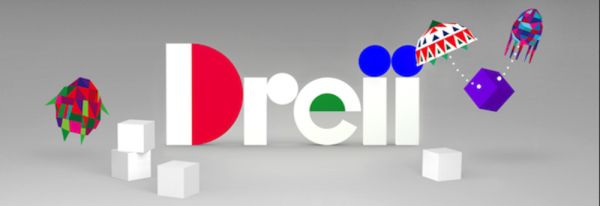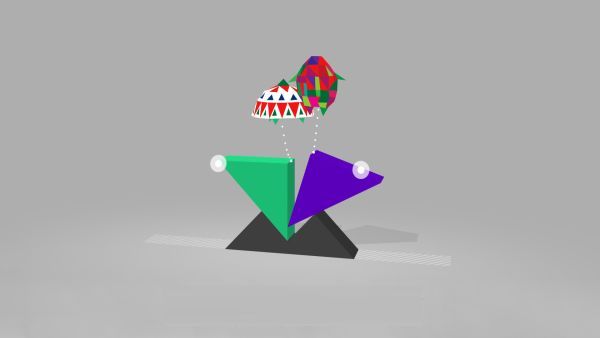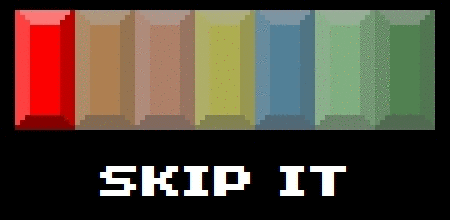
I first got word of Dreii a couple of months ago and I’ve been quite frankly jazzed about it ever since. A physics-based puzzle game! With Journey-style invisible matchmaking and limited communication! And that art style! Dreii almost seemed like it was designed just for me. It pains me to report then that, in spite of all of these things, Dreii is mired in an indecisiveness about what it wants its puzzles to be that makes it at best, boring, and at worst, infuriating.
Platforms: PC, PS4 (Version Played), Vita
Publisher: Bitforge
Developer: Etter Studio
Genre: Multiplayer Physics Puzzler
Release Date: March 9, 2016
ESRB Rating: Everyone
 The introduction of physics into video games may be one of the most important innovations to the medium, as it allows for a kind of emergent behaviour that makes every player’s experience with a game unique. Physics engines make their way into all kinds of games now, and 2015’s diverse range of examples run the gamut from Angry Birds 2 to Just Cause 3. Of course, another way in which physics engines are implemented is in the physics puzzle, first popularised by Half-Life 2.
The introduction of physics into video games may be one of the most important innovations to the medium, as it allows for a kind of emergent behaviour that makes every player’s experience with a game unique. Physics engines make their way into all kinds of games now, and 2015’s diverse range of examples run the gamut from Angry Birds 2 to Just Cause 3. Of course, another way in which physics engines are implemented is in the physics puzzle, first popularised by Half-Life 2.
I have always been confused by the physics puzzles of Half-Life 2 because they take a system that is designed to create unique and unpredictable situations and ask you to use this same system to follow a very rigid guideline and complete the puzzle, e.g., place floating barrels beneath a ramp to prop it up to allow your boat to pass over it. The problem with the Half-Life 2 school of physics puzzles is that it doesn’t actually seem to exploit the things that are interesting about physics engines. Indeed, the boat ramp example given above would lose nothing by being placed in the context of a LucasArts adventure game, because the player is essentially just deciding to “use” the floating barrels on the boat ramp.
Dreii is in many ways the logical conclusion of this kind of puzzle game, and that makes it kind of terrible. Nearly all of Dreii’s puzzles require you to stack simple shapes on top of each other until they reach an end point. Stacking physics objects can make for fun gameplay – I had a blast with Not Tetris 2 and 99 Bricks Wizard Academy – but very often the puzzle solution in Dreii is not about figuring out how to counterbalance the shapes so that they stack well, but rather about working out how to combine, for example, two triangles and a rectangle such that they can be used to reach the end goal.
Combining shapes to make new shapes is not inherently bad, but it does mean that much of Dreii feels like a simple tiling puzzle or a child’s geometry exam that asks, “Which of the following sets of shapes can be combined to form a rhombus?” In fact, the puzzles often aren’t even this challenging: a particularly baffling example asks you to just stack two circles on top of each other. Another asks you to stack eight squares on top of each other to reach the end, and if you don’t enjoy this puzzle the first time round, you’ll love it when the exact same puzzle reappears later, except this time, a gust of wind occasionally knocks your tower down before construction is finished.
The puzzles in Dreii are made challenging not by their logical complexity but rather by the fiddliness of implementing the solution. You manipulate the shapes by playing as a flying abstract creature that carries the shapes by attaching a rope to them. That fact that the shapes are always hanging from a rope means that you have to be incredibly careful to ensure that you don’t end up with the shapes swinging wildly and knocking over the tower that you have already spent time painstakingly building. And let me be clear: you will see the solution to a puzzle immediately, spend five minutes building the solution, and then accidentally knock it all over just as you’re putting the final piece on top, and this will happen over and over again. Additionally, the imprecise controls sometimes lead to uncertainty about whether your solution is incorrect or if you are simply struggling to balance two circles on top of each other, and this is just not fun.

Even if you get to a point that you are so careful and patient that you never knock over your own tower, another player might enter your game unannounced and knock down all your hard work. This is because Dreii’s multiplayer works by automatically and seamlessly connecting you to other players, so that they appear without warning in your level. If this multiplayer sounds frustrating, this is apparently the developer’s intention, for you initially have absolutely no way of communicating with your online team-mates, making this a decidedly uncooperative co-op experience.
At first, cooperation incredibly frustrating, but as you progress, you unlock words such as “hello” and “help,” and as you build your vocabulary, the co-op gets, if not more enjoyable, certainly less annoying. This is actually a part of the game that really works (finally unlocking the ability to say “wait” felt almost revelatory), and Dreii therefore succeeds, at least to some extent, in being “a game about friendship,” as it describes itself. The gradual process of unlocking new words is an elegant way of expressing the importance of community and communication for progress, but this falls apart later in the game when multiplayer-only levels are introduced, and you are expected to sit in the level hoping that another player will arrive. It is perhaps more productive to think of Dreii as a multiplayer game than a physics puzzler, because it is seems that it is this aspect of the game, rather than its ill-considered puzzles, that the developers actually care about. The multiplayer accurately conveys the game’s “message,” but this is little comfort to the player who cannot proceed because she cannot choose to find other players, and I worry about what will happen to Dreii when there are even fewer players online.
In my time with Dreii, I experienced some framerate issues, and the game completely froze while loading levels on multiple occasions. All of these issues are particularly frustrating because I love Dreii’s aesthetic. The player characters all look great, like a bunch of jellyfish piñatas floating around the screen, and they contrast beautifully with the simple, black and white geometric shapes that form the puzzles. This visual minimalism is reflected in Dreii’s sound design, as there is no sound except for percussive sounds of claves, snare drums, and wind chimes, each applied to different materials.
Ultimately, I believe that Dreii is so busy striving to be a capital-A Art Game (that most pleonastic of genres) that it forgets to have gameplay that makes sense. The multiplayer is an occasionally elegant demonstration of the admittedly trite idea that community is important, but Dreii does not explore this idea; it is rather satisfied to insist that it is true by gating the player’s progress until more players can be found. If games are ever to evolve as a medium, the notion that they have to constantly be fun probably has to be abandoned, but when a game literally prevents you from playing it to make its point, then the game has reached an unfortunate double bind in which the thesis statement has become invisible by so ardently insisting upon its own importance.

Review Disclosure: A review copy of Dreii was provided by Bitforge for the purposes of this review.







